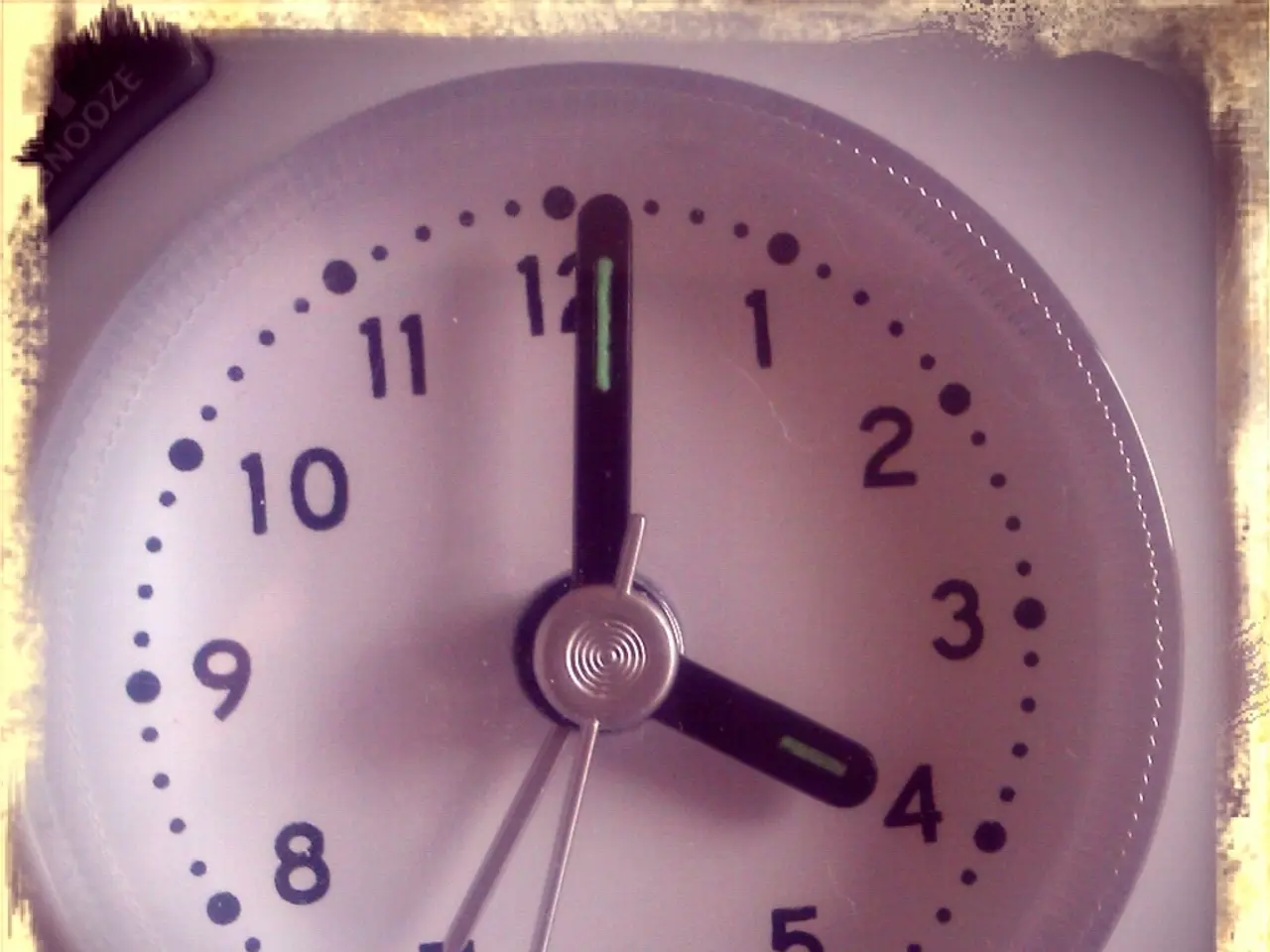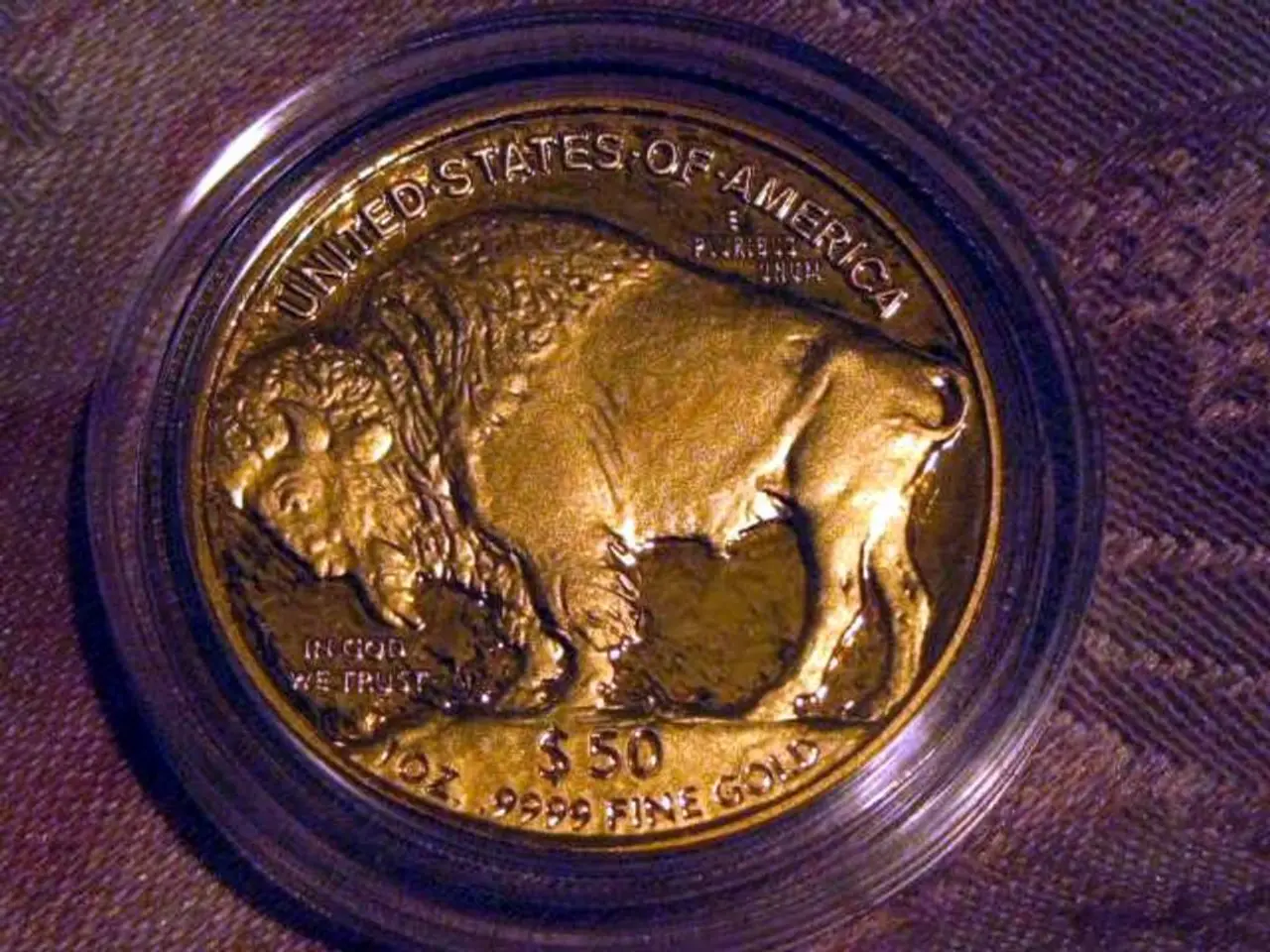Ten Analog Synthesizers Shunning Repetition of Times Gone By
*Modern Music Gear: Breaking Away from the Past*
C'mon, let's face it - nostalgia can be a real wallet drain, and it doesn't always get the job done. Especially when it comes to music equipment. That's why I'm all about skipping over vintage instruments.
current advancements in analog synthesis, hardware, and firmware have given us some incredible workflows. Analog synths can even be used as VST plugins, syncing up with just about anything.
But those vintage reissues? They can be as exciting as a stale sandwich to me. Sure, they make iconic synths accessible to more people, but we aren't recreating history here - we're pushing it forward.
That's why I'm listing 10 cutting-edge pieces of gear that are all about looking to the future, not the past:
1. Korg Minilogue
First up, my personal favorite: the Korg Minilogue. This polyphonic four-voice analog synth, designed by Tatsuya Takahashi, joined the market during the recent "democratization of analog synthesis". It quickly became a hot item in music stores and studios everywhere (it was often backordered for months!).
Korg's intuitive workflow and smart firmware make this a performance-ready synthesizer. It saves patches as you create them and has a tape delay, ring modulation, and knobs to shape your waves (with loads of waveshape possibilities). The OLED oscilloscope even gives you visual feedback on how you're shaping your sound in real-time. All in all, this synth packs the benefits of a vintage synth, but with a sleek, modern interface. And the price is reasonable too.
If you like the Minilogue, check out its mono bass synth sibling, the Monologue (even Aphex Twin designed some of the presets!).
2. Elektron Analog Rytm MKII
Swedish gear-makers Elektron are known for three things: building workhorses, designing exceptional sequencers, and making you want to pull your hair out when you first get one of their machines (they have a steep learning curve!). But stick with it, and you'll find the exponential potential and power of these machines. I've got an Analog Rytm, or 'AR', for the homies.
After extensive exploration, I discovered the many complex polyrhythmic sequences and patterns I could make. Even off-grid, unquantized sequences are possible for that extra groove.
The Analog Rytm MKII is the new version of the AR. It includes more dedicated buttons and quick performance controls (bless the Save Project button!). The AR also has full sampling capability via balanced 1/4" audio inputs. It looks new and the pads are larger.
Elektron's Overbridge software allows you to use your Elektron device as a plugin, connecting it to your DAW. The MKII has higher bandwidth for Overbridge.
From their innovative gear to their future-focused workflows, Elektron is changing the game without a hint of nostalgia.
3. Kilpatrick Phenol
Canada's Kilpatrick's Phenol patchable analog synthesizer is a Kickstarter success story. Launched in 2015, this synth has been blipping and beeping all over the world since then.
It's inspired by modular synths and is compatible with them, but comes in a neat little box that makes it more approachable. It's both a gateway for newcomers in the modular world and a travel-friendly add-on for seasoned heads.
The Phenol has two analog VCOs with triangle, ramp, and pulse outputs, two analog filters, two analog VCAs with level control, and two envelope generators and digital LFO combos. It also has a built-in MIDI sequencer and looper, and a compact mixer and digital delay.
The price is surprisingly reasonable for a modular box.
4. Novation Peak
I'm not an analog purist, but I do love hybrids of analog and digital. Novation's latest polyphonic synth is the embodiment of analog/digital brilliance.
What's analog? The 8 synth voices, the distortion, and the filters - as they should be. So what's digital? Well, the processor used for routing, the modulation, and the effects - reverb, delay, and chorus.
The digital components are powered by an FPGA (Field Programmable Gate Array). Unlike the usual DSP chips, this processor can handle many functions at once and operates at a much higher rate. That means higher precision and clarity.
The Type of waveform-generation used is Numerically Controlled Oscillators (NCOs) with 17 wavetables. NCO ensures the Peak will never fall out of tune. The modulation matrix allows for plenty of complexity. You also have FM synthesis for all you frequency modulators out there.
"It sounds as good as any full analog synth and, in some cases, sounds better - if you're prepared to spend some time getting to know how it works." - FACT Magazine
This synth is a true game-changer for the market right now. Novation has found the perfect blend of analog and digital in this versatile synth. Grab your favorite MIDI keyboard, plug it in, and you're set.
5. Dreadbox Erebus
Dreadbox has been handcrafting pedals and synths in Athens, Greece since 2012. Their reputation has grown and you can now find them at all the boutique gear shops. The Erebus analog paraphonic synthesizer is among their popular models. It's got 2-voice analog paraphony or unison.
This compact box comes equipped with a MIDI-to-CV converter, a unique sounding Low Pass Filter, delay and echo units, and lots of lot of modular patching options. Hook it up to your Eurorack modules or an MS20. It also has basic MIDI implementation for syncing purposes.
"For a variety of solo and bass duties, the Erebus shines but its real strength could be in psychedelia. A couple of subtly detuned sawtooth waves and a slowly swept resonant filter work wonders every time, especially when bathed in wavering echo." - SoundOnSound
Including the on-board analog effects and funky design, the Erebus doesn't let the legends cast a shadow on it. I'm all for making space for smaller companies in today's synth star system – and this one is promising and quite affordable.
6. Behringer Deepmind 12
The much-publicized Behringer DeepMind 12 is intriguing. It has a ton of voices for an analog synth: 12-voice polyphony.
The DeepMind might seem over the top, but once you start detuning all of those voices, you can get really trippy.
The DM12 has 4 effects engines that are made by TC Electronic (superb pedal makers) & Klark Teknik (who develop signal processing and audio equipment). You get a total of 32 digital effects to choose from – and can load 4 per patch.
The screen gives you useful visual feedback on all the parameters you're effecting. The 1024 patch memory locations to save your patches means all your ideas aren't gonna get lost in the shuffle.
It's equipped with a one-finger chord triggering feature and an arpeggiator. It comes with 49 Keys with aftertouch, a 2- or 4-pole low-pass filter per voice, a general high-pass filter, modulation, and more.
Behringer is somewhat of a divisive company, especially on "issues regarding originality", but this synth is definitely not a copy – even though it's said that the initial inspiration came from the Juno 106. It packs a ton of cool features for an impressively low price.
7. Moog Sub Phatty
Moog is all over vintage synths, but the Sub Phatty monophonic synth (born in 2013) is anything but old-school. It has a renewed engine, a plugin editor, and a reasonable price.
The Sub Phatty doesn't skimp on sound quality though – its Multidrive section gives it a crisp, aggressive sound unlike most vintage synths.
This synth has a nice front panel with tons of features, and more that can be accessed from the free standalone/plugin editor. You have two variable waveshape oscillators at your disposal. The coolest part is the Wave selection knob – it lets you select a waveshape that's in-between two waves, or even sweep through them during a performance for subtle sonic changes.
That's just the beginning. There's also one sub oscillator that generates a square wave one octave below Oscillator 1, and a noise generator with a lot of body.
The 25 semi-weighted keys have a nice feel, as you'd expect from a Moog.
This synth is awesome for sound design and even recording your own custom percussion kit. What makes it future-facing are the renewed engine, the plugin editor, and the price.
8. Tasty Chip Electronics ST-4
The small Dutch operation Tasty Chip Electronics is another Kickstarter success story.
The ST-4 analog-digital hybrid synth is their second offering. It's defining feature is the 16-bit style tracker music machine – think 707 grid mixed with a 1st generation iPod display.
It has digital oscillators, analog VCF and VCAs, and on-board sampling capabilities. It's got lots of knobs, buttons, and faders for hands-on tweaking. It's fully controllable with MIDI (I've seen demos that use an Apple computer keyboard). You can use it as a desktop or mount it on standard 19" racks.
The ST-4 also caters to the DIY synth nerds: you can buy the ST-4 kit to assemble yourself for much cheaper.
Keep an eye out for Tasty Chip Electronics. They're also working on an exciting new polyphonic hardware granular synth, the GR-1.
9. Roland SE-02
The California-based Studio Electronics teamed up with Roland to create the SE-02. The result is an analog synth with all the functionalities expected of contemporary gear. It's got three analog oscillator, but they tune automatically, giving you more time to focus on the music. There's also a 16-step sequencer, a total of 384 presets, and 128 user-created presets. It comes with an LFO and digital delay that can be tempo-synced.
The XMOD section allows for three different cross-modulations, combining with the feedback section and the noise generator, for truly unique sounds.
This synth is appealing because it will likely satisfy both your vintage synth cravings and push beyond them – in both sound and usability.It syncs to both analog and digital setups using USB, MIDI, or CV/gate.
10. Arturia MatrixBrute
"Analog Avant-Garde" is how Arturia describes its latest machine, the MatrixBrute. While that sounds a little over-the-top, this synth does have some forward-thinking features.
The MatrixBrute is a monophonic synthesizer with a modular-like flexibility, paired with the ability to save 256 presets.
In terms of approach, it's similar to driving a spaceship – tons of buttons, knobs, keys, and directions you can go.
The central focus is definitely the big modulation matrix (the button grid). It lets you create your own routings and come up with unique sounds. This machine promises no menu diving and double functions.
It's got three analog 'Brute' oscillators (made famous in Arturia's Mini- and Micro- Brutes), two high-quality filter, and five analog effects (stereo delay, mono delay, reverb, chorus, and flanger). These effects can be routed in various ways on the matrix.
It's easy to connect to both analog and digital setups using USB, MIDI, or CV/gate. That means you can use it directly with your DAW or with whatever hardware setup you have.
This is definitely the priciest item on this list, but with the amount of possibilities, the unique workflow, and the number of hands-on controls, it seems well-worth checking out – and paves the path to innovate.
The Korg Minilogue and the Arturia MatrixBrute, both modern synths, are prime examples of sound design advancements, combining the benefits of vintage synths with sleek, user-friendly interfaces. While the Minilogue uses Tatsuya Takahashi's intuitive workflow and smart firmware to create performance-ready synthesizer sounds, the MatrixBrute offers a modular-like flexibility, a modulation matrix, and five analog effects, presenting a unique, innovative workflow for musicians.







